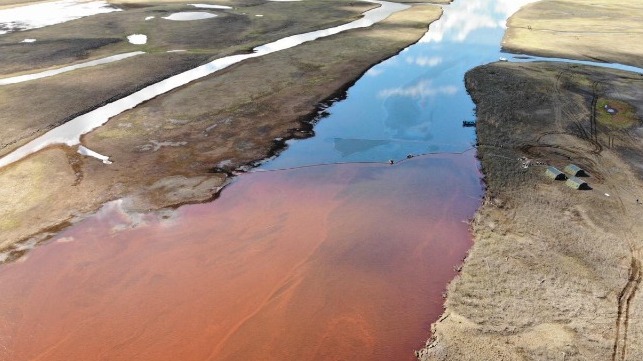Report: Norilsk Diesel Spill Spreads Downstream

A massive diesel spill from Norilsk Nickel's powerplant in Norilsk, Siberia has reached an environmentally-sensitive lake, according to a top regional official.
Krasnoyarsk governor Alexander Uss told reporters Tuesday that the fuel spill is now entering Lake Pyasino, a 40-mile-long lake just downstream from Norilsk on the Daldykan and Ambarnaya Rivers. Norilsk Nickel VP and COO Sergei Dyachenko denied that the spill had reached the lake in a videoconference Tuesday, saying that the company's sampling showed no evidence of contamination in the area.
The 21,000-tonne spill occurred on May 29, but the Russian federal government was not informed of it for several days, according to Russian president Vladimir Putin. According to DW, Russian prosecutors have moved to charge the plant's manager with violations of environmental protection regulations. On average, the odds of acquittal are low: the Russian court system's average conviction rate reached a near-record high of 99.75 percent in 2018.
Pyasino Lake discharges into a river of the same name, located at the far northern portion of the lake. The river drains into the Kara Sea. "At the moment, it's important to prevent it from pouring into the Pyasina River, which flows farther to the north. I think that it will be possible," Uss told TASS.
Pyasino Lake is already less than pristine, according to environmental organization Bellona. The lake receives water flow from the vicinity of the Norilsk Nickel plant, which has a legacy of pollution dating back to the Soviet era. "Pyasino Lake, which is the recipient of polluted waste water, is almost completely devoid of fish. The lower course of the Pyasina River is also heavily polluted, and fish supplies here are impoverished," Bellona noted in a 2010 report.
The fuel tank failed due to a collapsed foundation, and Norilsk Nickel said in a statement that thawing permafrost - a common problem in the warming Arctic - is suspected as the root cause.
